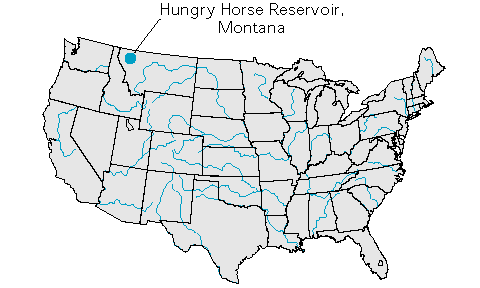Q
Effects of Surface-Water Reservoirs on the Interaction of Ground Water and Surface Water
The increase of water levels in reservoirs causes the surface water to move into bank storage. When water levels in reservoirs are decreased, this bank storage will return to the reservoir. Depending on the size of the reservoir and the magnitude of fluctuation of the water level of the reservoir, the amount of water involved in bank storage can be large. A study of bank storage associated with Hungry Horse Reservoir in Montana, which is part of the Columbia River system, indicated that the amount of water that would return to the reservoir from bank storage after water levels are lowered is large enough that it needs to be considered in the reservoir management plan for the Columbia River system. As a specific example, if the water level of the reservoir is raised 100 feet, held at that level for a year, then lowered 100 feet, the water that would drain back to the reservoir during a year would be equivalent to an additional 3 feet over the reservoir surface. (Information from Simons, W.D., and Rorabaugh, M.I., 1971, Hydrology of Hungry Horse Reservoir, northwestern Montana: U.S. Geological Survey Professional Paper 682.)
 |